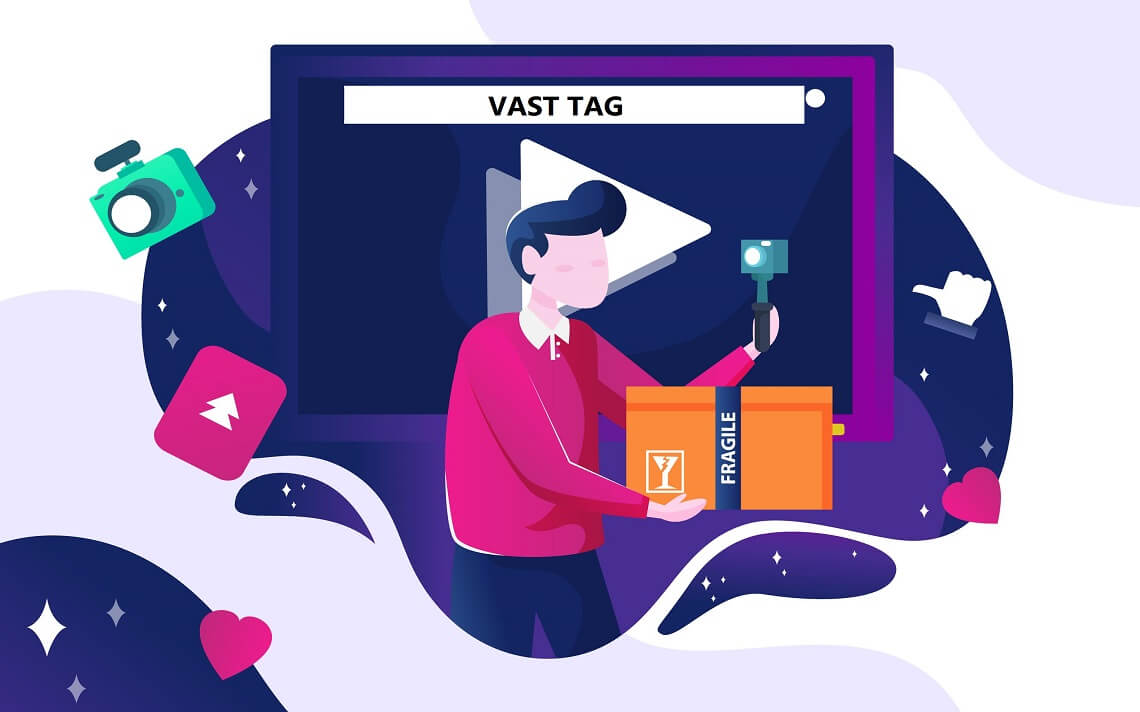
Google Interactive Media Ads and How Does It Help Video Monetization?
Table of Contents
What is Google IMA?
Google’s Interactive Media Ads (IMA) software development kit (SDK) allows video players to serve video ads. The Google IMA, in particular, is designed to:
- Make, parse, and fulfill video ad requests to VAST-compliant ad servers;
- Help handle ad playback; and
- Collect and report metrics to ad servers.
The Google IMA SDK incorporates these features into video players that play interactive media content such as games, in addition to standard video. It originally worked with Flash and HTML5, later adding SDKs for iOS, Android, and Google Cast.
Google ceased supporting Flash VPAID ads and IMA SDK development for Flash in June 2017.
How does Google IMA work?
With the inclusion of certain blocks of code and dependencies in a publisher’s video player declaration, the Google Interactive Media Ads integrates into the player and supplies APIs to handle operations and events related to video ads.
Simply put, the SDK makes a video player capable of parsing video ad requests, interpreting responses from ad servers, and generally carrying out the operations needed to successfully serve an ad.
Google IMA works with the VAST, VMAP, and VPAID video ad-serving standards maintained by the IAB. This means that aside from working with Google-run services like DoubleClick for Publishers and the AdSense network, Google Interactive Media Ads can also pull in ads from any third-party ad server as long as it’s VAST-compliant. The IMA SDK also allows video players to go beyond basic ad handling operations: the Google IMA SDK includes support for advanced features like multi-event tracking reports, Google Publisher Tag support, Active View viewability measurement, and so on.
For a quick, beginner-friendly look at the technical details of implementing the Google IMA SDK, here’s a short video from the Google development team:
There’s also a flowchart outlining the lifecycle of a typical IMA SDK implementation available. If you’d like to take a more in-depth look at a finished implementation, the Google IMA SDK team has also put up live samples and a sample app on GitHub.
What Can the Google IMA SDK Do for You?
The decision to implement Google IMA is in the publisher’s hands, but as an advertiser, you still get similar benefits:
- VAST, VMAP, and VPAID compliance, and therefore fewer compatibility issues;
- a broader range of options for how your video ads are displayed; and
- access to more advanced video deployment and tracking features.
Most of the Google IMA SDK’s technical advantages come from granting access to the capabilities of the DoubleClick for Publishers video module. This includes support for TrueView Instream Video Ads, monetization options like Google AdSense for video and the DoubleClick ad exchange, and so on.
Google IMA also presents certain advantages when it comes to the measurement side of advertising. Active View viewability metrics, for example, allow advertisers to keep better track of their ads’ viewability — and, by extension, their potential effectiveness.


